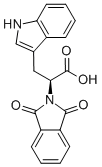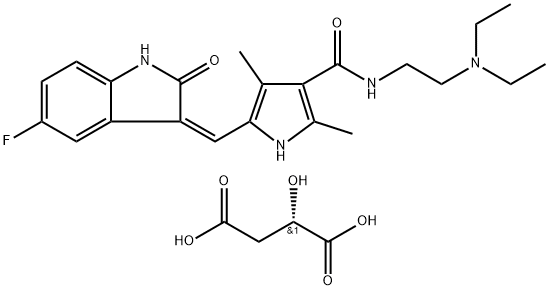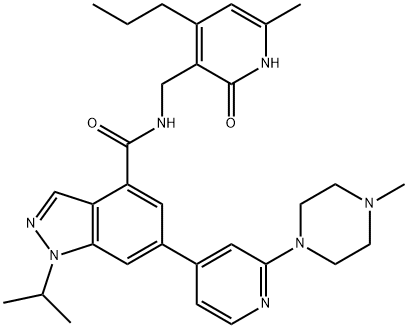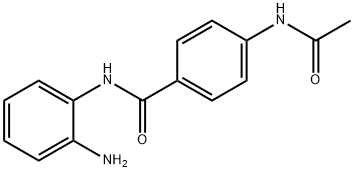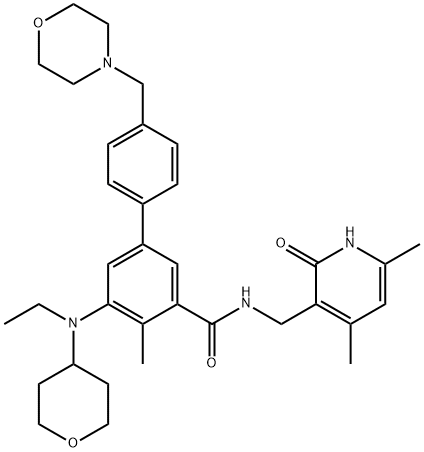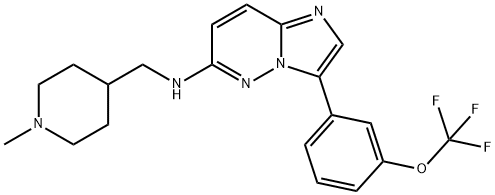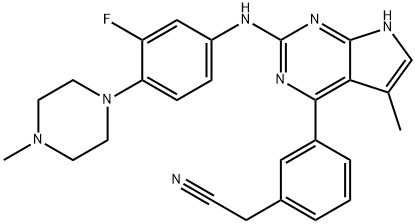SGI-1027
Synonym(s):N-(4-(2-Amino-6-methylpyrimidin-4-ylamino)phenyl)-4-(quinolin-4-ylamino) benzamide
- CAS NO.:1020149-73-8
- Empirical Formula: C27H23N7O
- Molecular Weight: 461.52
- MDL number: MFCD27937047
- SAFETY DATA SHEET (SDS)
- Update Date: 2024-11-19 15:53:33

What is SGI-1027?
Description
SGI-1027 (1020149-73-8) is a potent and selective inhibitor of DNA methyl transferase inhibiting DNMT1, DNMT3A and DNMT3B with comparable potency (IC50=12.5, 8.0 and 7.5 mM respectively).1? Treatment of various cancer cell lines with SGI-1027 results in selective degradation of DNMT1 (MG-132 sensitive) with minimal effect on DNMT3A and 3B at 2.5-5 mM.1 Prolonged treatment of RKO cells resulted in reexpression of silenced tumor suppressor genes.1 Synergizes with doxorubicin at growth inhibition in neuroblastoma cell lines.2 Disrupts the MKK3-MYC complex in cells and inhibits MYC transcriptional activity in colon and breast cancer cells.3
The Uses of SGI-1027
SGI-1027 is a quinoline derivative and a potent inhibitor of DNA methyltransferase (DNMT). SGI-1027 can be used as a potential therapeutic agent for the treatment of cancer and other diseases and also as a research tool to investigate the role of DNMTs in epigenetic events.
What are the applications of Application
SGI-1027 is an inhibitor of the DNA methyltransferases
Biochem/physiol Actions
SGI-1027 is a DNA methyltransferase (DNMT) inhibitor with IC50 values of 6-13 μM for DNMT3B, DNMT3A and DNMT1. SGI-1027 directly inhibits DNMT activity by competing with the cofactor, S-adenosylmethionine (SAM) in the methylation reaction. SGI-1027 treatment of cancer cell lines induced degradation of DNMT1, but not DNMT3A or DNMT3B, and in RKO cells caused re-expression of the silenced tumor supressor genes p16, MLH1 and TIMP3.
storage
Store at -20°C
References
Datta et al. (2009), A new class of quinoline-based DNA hypomethylating agents reactivates tumor suppressor genes by blocking DNA methyltransferase 1 activity and inducing its degradation; Cancer Res., 69 4277 Penter et al. (2015) A rapid screening system evaluates novel inhibitors of DNA methylation and suggests F-box proteins as potential therapeutic targets for high-risk neuroblastoma; Target Oncol., 10 523 Yang et al. (2021), Discovery of the first chemical tools to regulate MKK3-mediated MYC activation in cancer; Bioorg. Chem., 45 116324
Properties of SGI-1027
| Melting point: | >280℃ |
| Density | 1.387±0.06 g/cm3(Predicted) |
| storage temp. | 2-8°C |
| solubility | Soluble in DMSO (up to 35 mg/ml) |
| pka | 13.31±0.70(Predicted) |
| form | powder |
| color | white to light brown |
| Stability: | Stable for 2 years as supplied. Solutions in DMSO may be stored at -20°C for up to 3 months. |
Safety information for SGI-1027
Computed Descriptors for SGI-1027
New Products
(S)-3-Aminobutanenitrile hydrochloride 4-Methylphenylacetic acid N-Boc-D-alaninol N-BOC-D/L-ALANINOL Tert-butyl bis(2-chloroethyl)carbamate 3-Morpholino-1-(4-nitrophenyl)-5,6-dihydropyridin- 2(1H)-one Furan-2,5-Dicarboxylic Acid Tropic acid 1-Bromo-3,5-Di-Tert-Butylbenzene S-2-CHLORO PROPIONIC ACID ETHYL ISOCYANOACETATE 2-Bromo-1,3-Bis(Dimethylamino)Trimethinium Hexafluorophosphate 4-IODO BENZOIC ACID 3-NITRO-2-METHYL ANILINE 1-(2,4-DICHLOROPHENYL) ETHANAMINE (2-Hydroxyphenyl)acetonitrile 4-Bromopyrazole 2-(Cyanocyclohexyl)acetic acid 4-methoxy-3,5-dinitropyridine 1-(4-(aminomethyl)benzyl)urea hydrochloride 2-aminopropyl benzoate hydrochloride diethyl 2-(2-((tertbutoxycarbonyl)amino) ethyl)malonate tert-butyl 4- (ureidomethyl)benzylcarbamate Ethyl-2-chloro((4-methoxyphenyl)hydrazono)acetateRelated products of tetrahydrofuran
You may like
-
 SGI-1027 CAS 1020149-73-8View Details
SGI-1027 CAS 1020149-73-8View Details
1020149-73-8 -
 2033-24-1 98%View Details
2033-24-1 98%View Details
2033-24-1 -
 1975-50-4 98%View Details
1975-50-4 98%View Details
1975-50-4 -
 2-HYDROXY BENZYL ALCOHOL 98%View Details
2-HYDROXY BENZYL ALCOHOL 98%View Details
90-01-7 -
 2-Chloro-1,3-Bis(Dimethylamino)Trimethinium Hexafluorophosphate 221615-75-4 98%View Details
2-Chloro-1,3-Bis(Dimethylamino)Trimethinium Hexafluorophosphate 221615-75-4 98%View Details
221615-75-4 -
 61397-56-6 CIS BROMO BENZOATE 98%View Details
61397-56-6 CIS BROMO BENZOATE 98%View Details
61397-56-6 -
 14714-50-2 (2-Hydroxyphenyl)acetonitrile 98+View Details
14714-50-2 (2-Hydroxyphenyl)acetonitrile 98+View Details
14714-50-2 -
 118753-70-1 98+View Details
118753-70-1 98+View Details
118753-70-1
